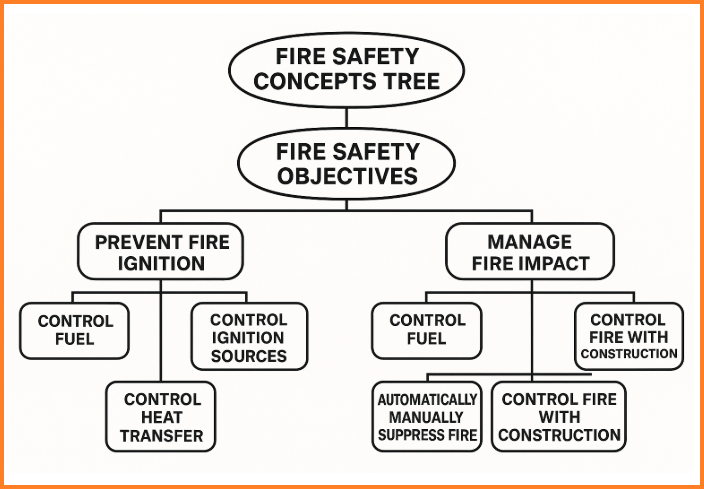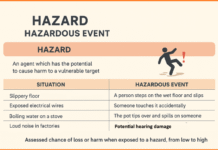Fire Safety Management Program is a structured approach aimed at preventing fires and ensuring safety in the event of a fire. It focuses on reducing the risk of fire incidents while maintaining protection for life, property, and business operations. This program applies to various settings, including industrial workplaces, commercial buildings, and residential complexes.
One of the foundational tools used in developing a fire safety program is the Fire Safety Concepts Tree from NFPA 550. This framework helps break down fire safety into clear, actionable components. It provides a systematic method for organizing both prevention efforts and emergency response plans.
Contents
Components of a Fire Safety Management Program
The fire safety concepts tree outlines two main areas:
1. Prevent the Start of Fire
This part of the program focuses on stopping a fire from starting. It includes:
- Control of Fuel: Ensure that combustible materials are properly stored, handled, and disposed of to limit fire load.
- Control of Ignition Sources: Identify and manage potential ignition sources such as electrical faults, open flames, and hot work operations.
- Control of Heat Transfer: Reduce the chance of heat moving from one area to another and igniting flammable materials.
2. Manage Fire if It Occurs
In the event a fire starts, the program shifts to managing its impact. This includes:
- Control of Fuel: Remove or isolate combustible materials that can feed the fire.
- Control of Environment: Adjust ventilation, pressurization, and oxygen availability to prevent fire growth.
- Suppress Fire Automatically or Manually: Use fire extinguishers, sprinkler systems, and fire brigades to limit fire spread.
- Control Fire with Construction: Apply fire-resistant building materials, firewalls, and compartmentation to limit fire movement.
Fire Safety Objectives
A successful fire safety management program aims to achieve the following objectives:
- Life Safety: Protect occupants by providing safe evacuation routes, alarms, and training.
- Property Conservation: Reduce damage to equipment, inventory, and infrastructure.
- Business Continuity: Enable quick recovery and continuation of operations after a fire incident.
Supporting Elements of the Program
A complete program also includes supporting activities that strengthen fire safety:
- Communication: Clear instructions and alerts during emergencies and regular awareness training for all personnel.
- Incident Investigation: After any fire event or near miss, detailed analysis is done to find causes and prevent recurrence.
- Inspections: Regular checking of fire safety equipment, electrical systems, and fire-prone areas to identify hazards.
- Emergency Preparedness: Conducting fire drills, emergency response planning, and coordination with local fire departments.
A Fire Safety Management Program is essential for any organization. Using the Fire Safety Concepts Tree as a guide, it helps in both preventing fire and responding effectively when fire occurs. By focusing on fuel control, ignition prevention, fire suppression, and structural safety, the program builds a safer environment for people, assets, and business operations.





